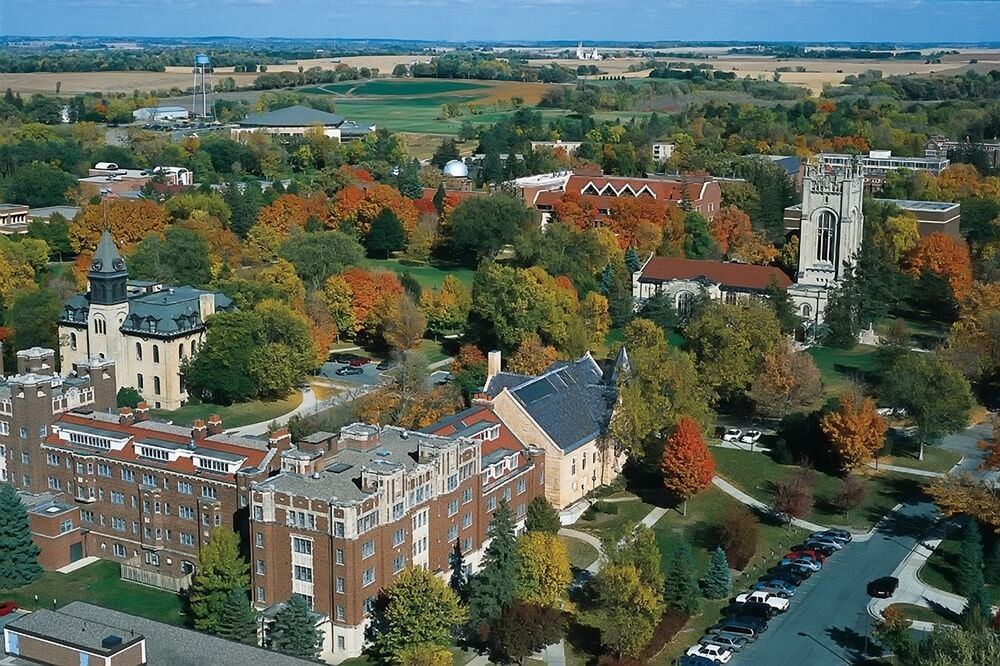
If you want to know how many medical schools you should apply to, you’ve come to the right place.
This is actually one of the most common questions we receive from students we work with. Because the application process is so intimidating, it’s only natural to want the magic number.
And other sites do an awful job of explaining it.
You either get an unhelpful answer like “as many as it takes” or an overly complicated formula that makes the process even more confusing.
So we decided to make something better.
This guide will show you how many medical schools you should apply to, and how we arrived at that number. You’ll also learn the ideal combination of schools to apply to (based on the likelihood of acceptance) to maximize your chances.
Table of Contents
So, How Many Medical Schools Should You Apply To?
When the next admissions cycle rolls around, you’re going to spend more time filling out applications than you think. While you might have experienced the stress of applying to undergraduate schools, getting into medical school is an entirely different game.
Not only do you need to complete multiple applications for every school you’re aiming for, but there’s also supplementary material like personal essays to think about.
Many premed students approach the application process thinking that they will apply to as many schools as possible.
On paper, this makes sense. The more schools you apply to the greater chances you have of getting accepted somewhere, right?
But in reality, that approach is not as effective as it seems.
Applying to medical school can be a huge financial burden. Every school has its own application fees that you need to cover. On top of that, you have the primary application fees with the American Medical College Application Services.
You’re looking at hundreds, possibly thousands, of dollars in fees depending on the number of schools you apply to.
Furthermore, filling out all those applications and completing supplemental material takes a significant amount of time. You only have so much time to get things done!
Chances are, you’ll be finishing up your final year of undergraduate school as you apply, making the process even more difficult.
The last thing you want to do is rush your applications and submit bad material. Even though you will only be going to one school, it’s important to make a good impression on every institute you’re applying to.
Rushing applications will do more harm than good.
The goal when applying to medical school is to increase your chances of getting in while also being smart about the resources and time available to you. You have to approach the process strategically to ensure that you’re not wasting time or money.
So, exactly how many schools should you be applying to?
A Good Average Number To Aim For
For most medical student hopefuls, 20 to 30 schools should be the target.
This is enough to increase your odds of getting accepted while still making the process manageable.
Of course, there is no “golden rule” when it comes to medical school applications. There are several factors to consider and every student’s situation is going to be different. However, 20 to 30 schools is a good average to aim for.
Now, that average doesn’t mean that you should just apply to any random school. Choosing which schools you’re going to apply to is half the battle!
There’s actually a lot of strategy involved, as you need to divvy up your odds of acceptance accordingly.
To do that, you must take a good hard look at your credentials. Consider everything you have to offer and be realistic about your chances of getting into various schools.
This isn’t always easy, but it’s an important step in the process that can save you a lot of time, money, and frustration.
It’s not uncommon for students to get rejected from all 30 schools they apply to despite meeting the numbers quota. In most cases, this happened because those students didn’t apply to the right schools.
Let’s say, for example, that you were to apply to the top 30 schools in the country. However, you have a low GPA and insufficient MCAT scores to back up your application. In all likelihood, you would receive 30 rejections.
The key is to be realistic about your chances of getting in so that you can make your applications as competitive as possible.
Before you start applying, you need to compare your GPA and MCAT scores to the average of recent matriculants at the schools you’re interested in. You can get this information from AMCAS, the schools directly, or our med school lists. Use that information to see where you stand.
From there, you’ll need to separate the schools you want to apply to into three distinct categories. This includes reach schools, reasonable schools, and safe schools.
1. Reach Schools
Approximately 25 percent of the 20 to 30 schools you apply to should be considered “reach schools.” A reach school is an institute that’s highly competitive and difficult to get in.
Contrary to popular belief, a reach school isn’t always an Ivy League establishment. What’s considered a “reach” for you will depend entirely on your MCAT score and GPA.
These are schools that have slightly higher average scores than what you’re bringing to the table. It’s still possible to get into these schools. In fact, students get into their dream medical schools all the time even though their credentials may not exactly match what other accepted students have.
However, the chances of that happening are quite low.
Take a look at your scores and compare them to schools that may be more difficult for you to get in. As a good rule of thumb, you can apply to reach schools with GPA requirements that are 0.2 points higher than yours. The minimum MCAT score requirement should be no more than 3 points higher than yours.
Be conservative about what you consider a reach school. Extreme gaps between your credentials and that of a school’s matriculated class would make the school near impossible to get into. Anything higher than 0.2 GPA points and 3 MCAT points and you’d likely be wasting your time and money.
It’s important to note, you’ll have to work extra hard if you have your heart set on a reach school. You’ll need to make up for those lower scores elsewhere if you want to increase your chances of getting in.
2. Reasonable Chance Schools
Next up, we have the “reasonable chance schools.” Out of the average number of medical schools you apply to, these should be the largest group.
About half of the applications you complete should be sent to these schools. That’s roughly 10 to 15 schools you’ll need to choose.
Also referred to as a “match school,” these are institutes with requirements that fall in line with your credentials. Now, this doesn’t mean that you’re a shoo-in to get accepted. Instead, the probability of acceptance is relatively moderate.
Your odds of matriculating are reasonable, but that doesn’t mean that you necessarily have the perfect credentials to get in. Again, most of it comes down to analyzing your GPA and MCAT scores.
Here’s an easy trick to defining reasonable med schools:
Typically, a school will fall into this category if you meet the expected GPA or MCAT score but not both. You might have the perfect MCAT score to get accepted, but your GPA scores put you in the “maybe” pile for admissions panels.
Like reach schools, you’ll need to do a bit of extra work to show that you’re worthy of matriculation. You already have part of the admission requirements locked down, but there are still some things you could work on.
Those shortcomings would need to be addressed in your application to increase your chances of getting in. Getting into med school is hard after all!
These schools should be your main focus of attention. While you should always work hard to ensure that all of your applications are perfect, these are the medical schools that are most-likely geared toward your skill and experience level.
3. Safe Schools
Finally, we have “safe schools.” Of the 20 to 30 schools you apply to, about 5 to 8 should be reserved for safe schools.
A safe school is going to be an institute that you have a high probability of getting accepted. You meet all of the expected GPA, MCAT score, and general admission requirements of the school.
With these medical schools, your credentials put you at a very competitive spot.
Don’t make the mistake of thinking that you can rush through these applications though! While your scores might be top-notch, admissions panels consider every aspect of your educational background and experience. Flubbing your way through these applications would only decrease your chances!
How Your State Of Residency Comes Into Play
In addition to your MCAT and GPA score, your state of residency will impact the application process. The number of schools you should apply to will depend on where you live as well.
Some states have far more medical schools than others.
Why does that matter? Well, most schools are keen on accepting in-state students rather than out-of-state ones.
That’s because schools are interested in supporting the state’s healthcare infrastructure as a whole. If you’ve spent your entire life in one state, there’s a good chance that you’re going to stay there. Schools want their graduates to stay behind and improve healthcare for the community.
If you live in a state with many medical schools, that’s an advantage (in some ways). New York, for example, has 15 medical schools. California has 12. Already, you have more in-state options than applicants who live in Alabama for example.
That said, this might not necessarily make things “easier”. Some states have schools with far more competition than others. Competitive schools receive applicants from around the world and have a pool of candidates with very impressive credentials.
Those schools usually don’t show preferential treatment for in-state applicants. With far more applicants than seats available, those schools will only go with the very best.
The same goes for states with only a handful of schools. States like Utah, North Dakota, and South Dakota only have a single medical school for in-state applicants. This means there might be a lot of competition among in-state applicants since there’s only one show in town.
Closing Thoughts
While there’s definitely an average number of medical schools you should apply to, this number obviously isn’t perfect.
Your GPA, MCAT score, and state of residency will all impact how many schools you should consider.
However, the number above is a great place to start. We’ve helped hundreds of students get accepted into medical school using this as a framework for managing their application.
If it worked for them, it can work for you as well.




